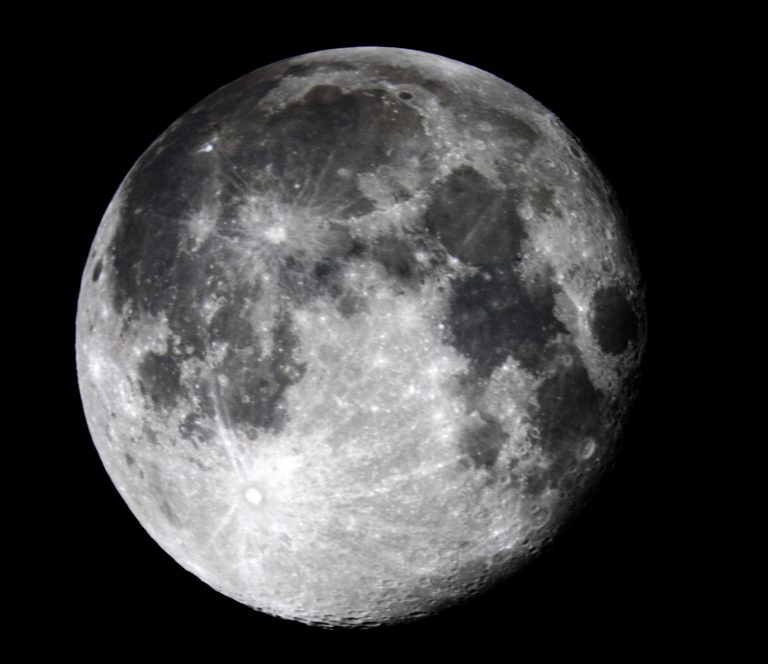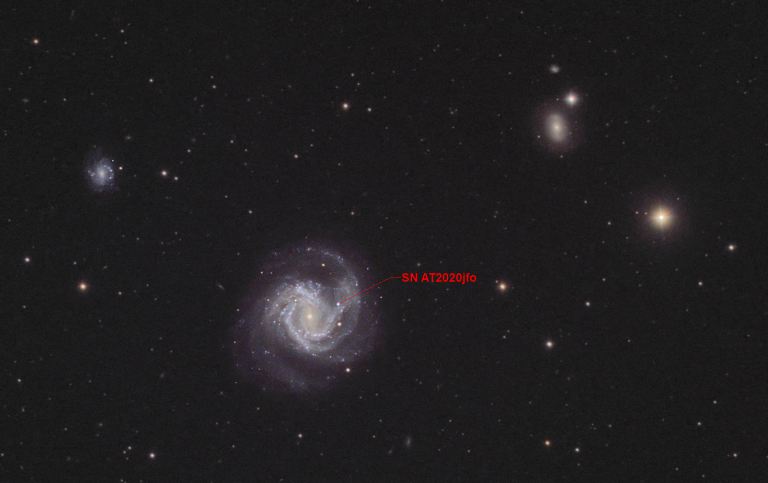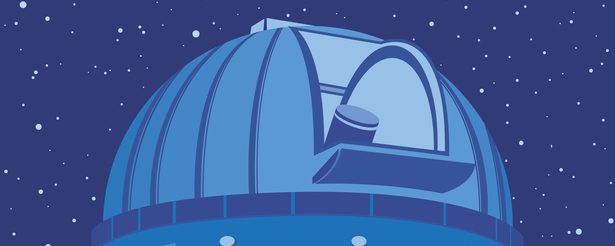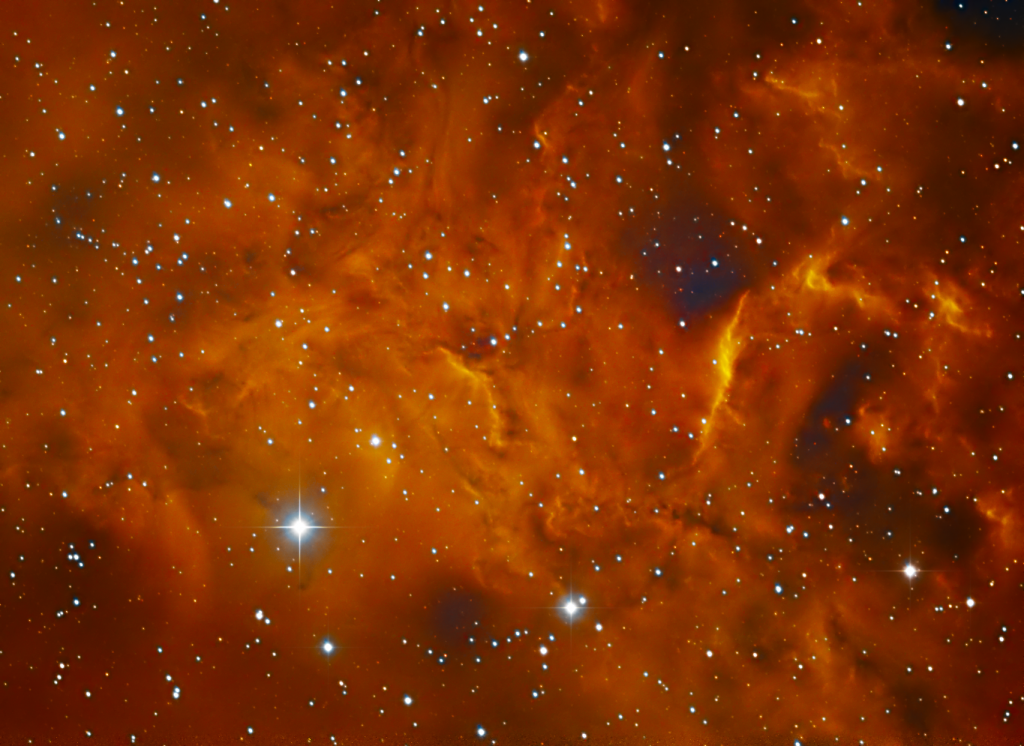
Similar Posts

Bode’s Galaxies (M81 & M82)
Johan Bode discovered both Bode’s Galaxy (M81, on the left) and the Cigar Galaxy (M82, on the right.) Look closely and you’ll see many other, more distant galaxies in the background as well.

The Whirlpool Galaxy
The Whirlpool Galaxy (M51) appears to be sucking the life out of its companion, NGC 5195. While these galaxies are interacting, they’re not actually connected right now – it just looks that way.

The Moon
A full moon captured with a Canon T6i DSLR.

A Supernova 50 million light-years away!
Highlighted here is a recently discovered supernova in the galaxy M61, over 50 million light-years away! This exploding star outshines the entire core of its own galaxy, and many of the much closer stars seen within our Milky Way. The sheer power of this stellar explosion is unfathomable. It’s 50 million light-years away, which means…

The Rosette Nebula, revisited
Had a couple of clear nights recently, and trained the ‘scope at the Rosette Nebula again. By combining this year’s data with last year’s, I created an image with a total 27 hours of exposure time! The Rosette Nebula is about 5,000 light-years away within the constellation Monoceros, and is the birthplace of the cluster…

Another look at the “green comet”
I don’t know why the press has latched onto the name “the green comet” for C/2022 E3 (ZTF) – most comets are green, and it’s too dim to see any color at all if you’re viewing it through binoculars or a telescope. But through 2 hours of total exposure time, the colors do emerge, and…

